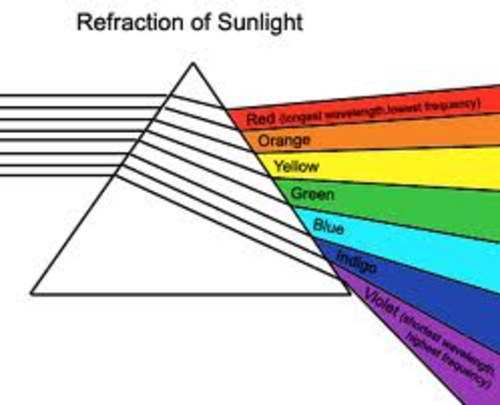LSCU Theory, Geometric Psychic Space & The Alien System
Light and Sound Combined Unit Theory(LSCU) looks at prism light dispersion and the major tone scale:
Light and Sound Combined Unit Theory Looks at Major Scale Tones-
There are seven tones to the major scale. The interesting but seldom discussed thing is that each tone has 3 tones in it. I'm not talking about chord construction where through the 1,3,5 of the scale pattern you see major, minor and a half diminished chord constructed with a 1,3,5 pattern repeated. What I'm talking about is 1,3,5, from the 1st tone position being what every tone already contains:
__________________________________________________
1 2 3 4 5 6 7
1Step, 1step, 1/2step, 1step, 1step, 1step, 1/2step
1...........................3.............................5
1............2.............3..............4.............5............6.............7..............1
The chords are:
1major,2minor,3minor,4major,5major,6minor,7-1/2diminished.
________________________________________________
As stated above each tone contains a singular 1,3,5 sound based from the 1,3,5 of the 1st position. In other words although the 2,3,6 and 7th tones are not major chords each are major tones when played as separate tones. So when you hear one of those tones you hear the 1,3,5 tones simultaneously from the tonic root (position 1). Again even though 2 builds a minor chord, the 2nd tone played alone comprises the 3 tones as if a major root. So the same is true of each tone examined separately.
This is why major scales are structured the way they are, and why 7 and 1 as B and C are the most dissonant tones expressed as 7 and 1.Still doesn't make sense? The point is every time you hear any tone you are really hearing three specific tones regardless of where it appears in a chord.
It is also interesting to note that the minor five tone scale arrangements and major five tone scale arrangements each exist in 3 places within the major tones.
Furthermore, if you add the 7th tone to each 1,3,5 arrangement the 5th arrangement is unique to all the others.
______________________________________
Light and Sound Combined Unit Theory(LSCU) looks at prism light dispersion:
Sir Isaac Newton created a beam of sunlight through a prism. It spread into rays composed of seven different colours: Red, Orange, Yellow, Green, Blue, Indigo and Violet.This is called dispersion of the spectrum. When the light rays were passed again through a prism the rays turned back into white light. If only one ray passed through the prism it would come out the same colour. Conclusion, white light is made up of seven different coloured rays. These electromagnetic spectrum frequencies are visible to the human eye. There are also radio waves, infra-red and ultra-violet frequencies we can't see but they are all in that spectrum.
Notice the first, third and fifth colours are red, yellow and blue. In traditional colour theory, these are the 3 primary colours that cannot be mixed or formed by any combination of other colors.In other words all other colours are from these 3.
Secondary colours are formed by mixing the primary colors.They are green, orange and purple.
Tetiary colours are yellow-orange, red-orange, red-purple, blue-purple, blue-green and yellow-green. These are the colours formed by mixing one primary and one secondary colour.
_________________________________________________________________
Light and Sound Combined Unit Theory(LSCU) looks at prism light dispersion and major tone scales:
Conclusion-
The 1,3,5 primary colours (red, yellow and blue) parallel the 1st position major chord construction. There are seven "light tones" and seven "sound tones".
That light spectrum continues to spread out, or a prism can be used to revert it to normal sunlight. Therefore there is no octave of the light spectrum and it makes sense not to extrapolate further.
So it would seem unimportant? But it isn't! Remember the "interesting seldom discussed"? Thing is that each tone has 3 tones in it and I'm not talking about chord construction as described above in "About Major Tones".
Light tones re-combine easily and behave as I have described. One Sound tone contains the 1,3,5, (exactly like primary colours) not first position chord construction or any chord construction. The 7 tone light and sound scale parallels still applies. White light is the loudest, red is next, purple is quiet, black is quietest.
To go any further light and sound must be combined. Light and sound combined unit theory (LSCUs) are the new science.
___________________________
Click here to send an Email:
___________________________

